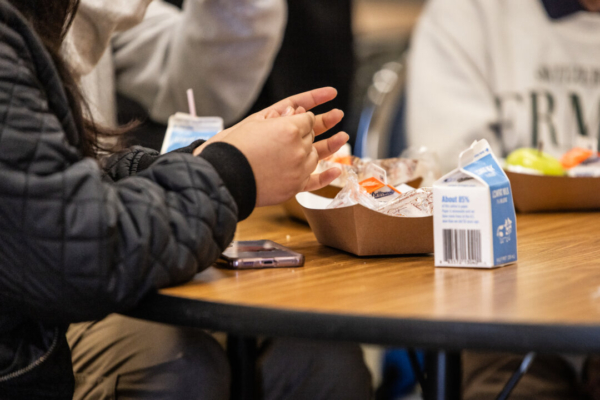California lawmakers have passed a bill aimed at banning the use of certain artificial coloring additives in foods provided to schools, as these chemicals may pose risks to children’s health.
In March of this year, State Assemblyman Jesse Gabriel introduced AB2316, which prohibits schools from providing foods containing six synthetic food colorings. These colorings include Red 40, Yellow 5, Yellow 6, Blue 1, Blue 2, and Green 3.
The bill also prohibits the use of titanium dioxide, a common coloring agent found in paint, cosmetics, plastic, and sunscreen.
These additives can lead to various health issues in children, including neurobehavioral problems, hyperactivity, cancer, and impacts on the immune system.
The California legislature passed the bill last week, and if signed by Governor Newsom, it will go into effect on December 31, 2027.
According to the analysis report from the Assembly, the ban applies to all school districts, county education offices, charter schools, and state special schools, “including all school meals and competitive foods sold to students from the night before midnight until 30 minutes after the end of the school day.”
The Consumer Brands Association expressed concerns about the bill, stating that it “undermines the comprehensive food safety and approval systems for these colorings, limiting the availability of healthy foods and eliminating common fundraising opportunities for sports teams and student clubs.”
The association noted that all these additives have undergone thorough reviews by federal and state systems and many international scientific institutions, always being deemed safe.
The California Medical Association supported the bill, pointing out that the Office of Environmental Health Hazard Assessment (OEHHA) in California found in a 2021 report that the thresholds set by the Food and Drug Administration (FDA) for synthetic food colorings are outdated.
Citing the report, the association stated that these thresholds were based on studies conducted 35 to 70 years ago, which “were not designed to detect behavioral impacts observed in children.” Newer studies suggest that the current FDA guidelines “may not fully protect children.”
A study from 2010 found that Red 40, Yellow 5, and Yellow 6 represent 90% of food colorings used in the United States. The report indicated that these chemicals contain “benzidine, a carcinogen for humans and animals.”
According to the Cleveland Clinic, Red 40 is a dye derived from petroleum, approved by the FDA for use in food and beverages. This dye is widely used in products like breakfast cereals, baked goods, cakes, Jell-O, pudding, energy drinks, and chips.
Potential side effects of Red 40 include asthma, allergic reactions, skin irritation, behavioral changes (such as depression and irritability), and hyperactivity, including Attention Deficit Hyperactivity Disorder (ADHD).
Meanwhile, the clinic noted that asthmatic patients exposed to Yellow 5 and Yellow 6 dyes may experience allergic reactions, as these dyes are primarily used in breakfast cereals and candies.
A report from OEHHA in 2021 mentioned that animal studies on Red 3, Red 40, Yellow 5, and Yellow 6 found that these colorings could lead to “one or more of the following effects: changes in brain chemistry, behavioral changes, alterations in learning and memory, and microstructural changes in the brain.”
“The scientific literature indicates that synthetic food colorings may affect the neurobehavior of some children,” the report stated, “multiple data from epidemiology, animal neurotoxicology, and mechanistic studies support this conclusion.”
Children ingest the highest amounts of Red 40, followed by Yellow 5 and Yellow 6, from foods such as fruit drinks, fruit-flavored beverages, frostings, breakfast cereals, and soft drinks.

